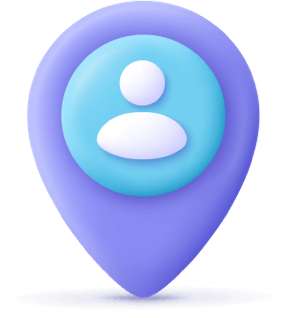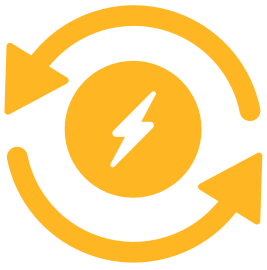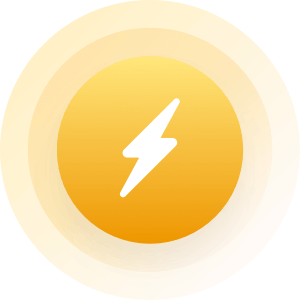Migraine is not just a bad headache. It is a neurological disease, with head pain and associated symptoms, such as nausea, vomiting, dizziness, sensitivity to touch, sound, light, and odors, abdominal pain, and mood changes. While children generally have fewer and shorter migraine attacks than adult sufferers, childhood migraine can be just as disabling, and it can seriously affect the child’s quality of life. A doctor should be consulted if a child suffers from frequent or disabling headaches or migraine symptoms.
Click here to view our list of Children's Headache Doctors.
Children Suffer from Migraine Too
•Migraine is very common in children - about 10% of school-age children suffer.
•Half of all migraine sufferers have their first attack before the age of 12. Even infants can have migraines. Migraine has been reported in children as young as 18 months.
•Before puberty, boys suffer from migraine more often than girls. The mean age of onset for boys is 7, and for girls it is 11. As adolescence approaches, the incidence increases more rapidly in girls than in boys. This may be explained by changing estrogen levels.
•By the time they turn 17, as many as 8 percent of boys and 23 percent of girls have experienced a migraine.
•The prognosis for children with migraine is variable. However, 60% of sufferers who had adolescent-onset migraine report ongoing migraines after age 30. The prognosis for boys tends to be better than for girls.
Migraine Can be Disabling in Children and Adolescents Too
Childhood migraine can significantly impair a child’s quality of life. In addition to the attack-related disability itself, children and adolescents may develop anticipatory anxiety, knowing that at any time an attack could disrupt their ability to go to school or enjoy social activities. It is quite common for children who suffer to be absent from school and unable to participate in after-school and weekend activities. In fact, children who suffer are absent from school twice as often as children who don’t. These and other issues often result in family discord.
Children and especially adolescents and teenagers can suffer from one of the most disabling types of migraine, chronic daily migraine (CM). CM occurs when a child has 15 or more headache days per month lasting more than 4 hours, for more than 3 months. Many teenagers with CM report daily headaches. Head pain is not the only symptom of CM; other common symptoms include dizziness, sleep disturbances, anxiety, depression, difficulty concentrating, and fatigue. CM is challenging to treat and significantly impairs the child’s quality of life.
Recognizing Migraine in Children
Migraine often goes undiagnosed in children and adolescents. In childhood migraine, head pain may be less severe than other symptoms, such as unexplained nausea or vomiting, abdominal pain, or dizziness. These non-headache symptoms are referred to as migraine equivalents. Children may experience migraine with or without aura. (An aura is a visual disturbance, such as blurry vision, flashing lights, colored spots, or even dizziness, which occurs within an hour prior to the headache.) However, migraine without aura is more common in children.
Before a migraine begins, parents may observe changes in their children’s behavior, including loss of appetite, irritability, yawning, food cravings, lethargy, withdrawal, and mood swings. Sensitivity to light, touch, smell, and/or sound are also common. Other indicators may include sleep walking, sleep talking and night terrors. Motion sickness may be an early warning of the predisposition to childhood migraine.
The most common migraine triggers in children are inadequate or altered sleep, skipping meals, stress, weather changes, bright lights, loud noises, strong odors, and hormonal fluctuations. Contrary to popular belief, food triggers affect only 5-15% of sufferers.
Diagnosing Migraine in Children and Adolescents
Diagnosis is made through a patient history, physical examination, and by ruling out other explanations for the symptoms. Sometimes diagnostic tests, such as blood tests, EEG, lumbar puncture, and neuroimaging are also used to assist in diagnosing migraine. Migraine tends to run in families. If one parent suffers from migraine, there is a 40% chance a child will also suffer; if both parents suffer, the chance rises to 90%.
A history, preferably conducted with both the child and the parent, should include:
•description of the pain (including location, nature, and timing)
•severity
•frequency and duration of episodes
•identifiable triggers
•symptoms at the onset, such as aura, lethargy, or nausea
•impact of the disease on quality of life (disability)
•previous treatments
•thorough family history
It is important to explore whether there is a pattern to the migraine attacks. For example, attacks may occur after a car ride or when the weather changes. Girls may have attacks associated with their menstrual cycle. Parents and children should keep a headache diary, recording date, time, a description of the pain and symptoms, any triggers, medication or action taken to relieve the pain, and time and nature of relief, to assist the doctor in diagnosis and treatment.
Treating Migraine in Children and Adolescents
Treatment for childhood and adolescent migraine depends on the age of the child and the frequency and severity of the attacks. Expert help from headache doctors or centers specializing in migraine may be indicated for children for whom diagnosis is difficult or who don’t respond to typical first-line treatments.
•For some children, sleep alone is an effective treatment.
•Although there are well over 100 drugs used to prevent or treat migraine symptoms, none has been approved for use in children. However, they have been studied by researchers and are prescribed. These drugs include triptans, ergot preparations, and NSAIDs (nonsteroidal anti-inflammatory drugs).
•Certain over-the-counter products may relieve some migraines. For mild to moderate migraine, general pain medications, such as acetaminophen (Tylenol), ibuprofen (Advil), and naproxen sodium (Alleve) used early in the course of the headache are often effective.
•Since lack of appetite, abdominal pain, and vomiting occur in 90% of child sufferers, drugs that treat nausea and vomiting specifically (antiemetics) can be useful.
•Because of the potential for medication-overuse (rebound) headaches, all medications should be used with care, including over-the-counter drugs and barbiturates. If a child is taking any medication for headache more than twice a week, a doctor should be consulted.
There are three general approaches to treatment:
1. Acute treatment uses drugs to relieve the symptoms when they occur.
2. Preventive treatment uses drugs taken daily to reduce the number of attacks and lessen the intensity of the pain. If a child has three or four disabling headaches a month, the doctor should consider using preventive medication, which includes certain anticonvulsants, antidepressants, antihistamines, beta-blockers, calcium channel blockers, and NSAIDs. Sometimes herbals and supplements, such as butterbur, magnesium, riboflavin, CoQ10, and feverfew, are recommended.
3. Complementary treatment does not use drugs and includes relaxation techniques (biofeedback, imagery, hypnosis, etc.), cognitive-behavioral therapy, acupuncture, exercise, and proper rest and diet to help avoid attack triggers. For some children, eating a balanced diet without skipping meals, getting regular exercise, and rising and going to bed at the same time every day help reduce migraine frequency and severity.
DISCLAIMER: The information provided here should not be used for the diagnosis, treatment, or evaluation of any medical condition. The Migraine Research Foundation has made every effort to ensure that the information is accurate; however, we cannot warranty its reliability, completeness, or timeliness. © Migraine Research Foundation.
Upload photo
Would you look at a profile that doesn't have photos?
Probably not! Upload a photo for others to be interested.
- Higher position in search results!
- Users with pictures get 10 times more responses in their messages
- Most people only contact those with pictures
Jenny
Lina
Anna
Jessica
Dony







